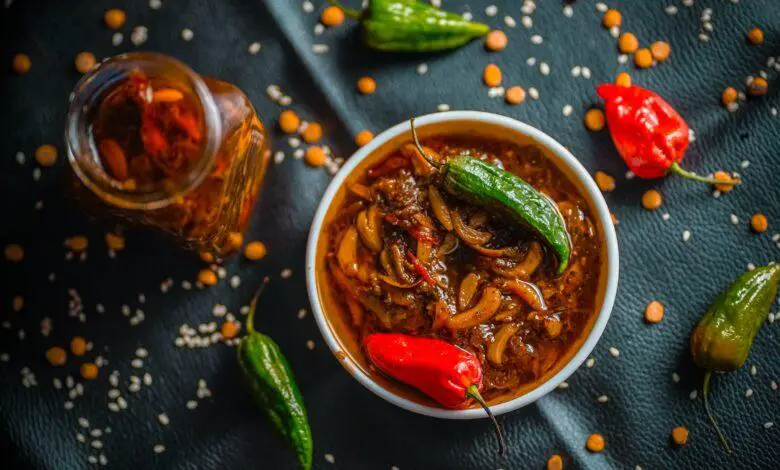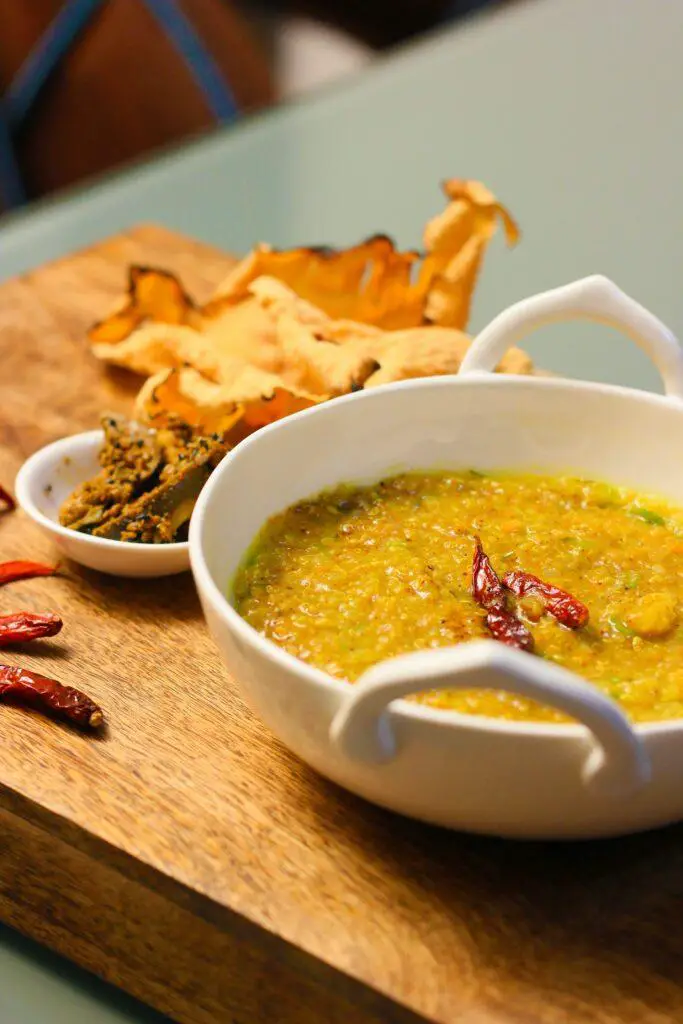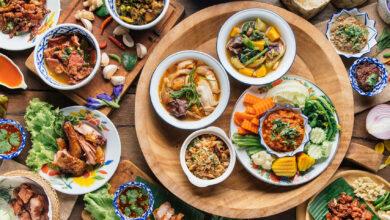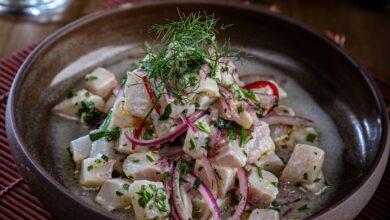🌶️ Sampling Sichuan Cuisine: Spicy Delights in Chengdu 🥢
Exploring the Rich Tapestry of Sichuan Flavors

Introduction
Picture yourself in Chengdu, the bustling capital of Sichuan Province, China. The air is thick with the irresistible aroma of spices, and the streets are alive with the sizzle of woks and the chatter of food vendors. Welcome to the heart of Sichuan cuisine, a culinary world where bold flavors, fiery spices, and unforgettable dining experiences await.
In this blog post, we’ll take you on a delectable journey through Chengdu, where Sichuan cuisine reigns supreme. Known for its mouth-numbing spiciness and a symphony of flavors, Sichuan cuisine is a paradise for food enthusiasts. Chengdu, with its lively teahouses, bustling street food markets, and iconic dishes, offers an unforgettable culinary adventure that’s as rich in culture as it is in flavor.
So, grab your chopsticks, prepare your taste buds, and join us as we delve into the fiery and flavorful world of Sichuan cuisine in Chengdu.
Sichuan Cuisine Unveiled
Overview of the key characteristics of Sichuan cuisine
Sichuan cuisine, also known as Szechuan cuisine, is one of the most renowned and beloved regional cuisines in China. It hails from the Sichuan province in southwestern China and is celebrated for its bold and distinct flavors. What sets Sichuan cuisine apart are its key characteristics, which include a harmonious blend of five essential taste sensations: sweet, sour, bitter, salty, and most notably, spicy.
Sichuan cuisine is known for its generous use of chili peppers, Sichuan peppercorns, and garlic. These ingredients contribute to the cuisine’s signature spiciness, which can range from mildly piquant to intensely fiery. However, what truly distinguishes Sichuan cuisine is the unique numbing sensation known as “ma la.” Ma la is the result of Sichuan peppercorns and black peppercorns, combining to create a tingling, almost anesthesia-like sensation on the tongue. This balance of heat and numbing qualities creates a truly unforgettable dining experience.
Sichuan dishes are also characterized by their liberal use of garlic, ginger, and a variety of spices and seasonings, such as star anise and cinnamon. Additionally, ingredients like tofu, Sichuan preserved vegetables, and a wide array of meats and vegetables are commonly used in Sichuan cuisine. The distinct preparation methods, including stir-frying, steaming, and deep-frying, further contribute to the multifaceted nature of the cuisine.
The role of spice and numbing sensation (ma la) in Sichuan dishes
The cornerstone of Sichuan cuisine is undoubtedly its use of spice and the numbing sensation known as “ma la.” This dynamic duo creates an exhilarating and unforgettable flavor profile that has earned Sichuan cuisine a dedicated following worldwide.
Chili peppers are a fundamental component of Sichuan cuisine, adding the fiery heat that characterizes many of its dishes. Sichuan peppercorns, in particular, contribute to this sensation by offering a unique numbing effect. This numbing quality is the result of compounds in Sichuan peppercorns, which create a tingling, buzzing, and slightly citrusy sensation when consumed. The combination of fiery chili heat and the numbing sensation creates a mouthwatering complexity that keeps diners coming back for more.
The numbing sensation is not just about spiciness but also plays a role in enhancing the overall dining experience. It can balance out the heat, providing a welcome respite while allowing the flavors of the dish to shine through. It’s this nuanced interplay of flavors that makes Sichuan cuisine so intriguing and addictive to food enthusiasts.
How Sichuan cuisine has captivated food enthusiasts worldwide
Sichuan cuisine has achieved global acclaim and captivated the palates of food enthusiasts worldwide, and there are several compelling reasons behind its widespread popularity.
First and foremost, it’s the bold and exciting flavors of Sichuan cuisine that draw food enthusiasts in. The combination of intense spiciness and the numbing “ma la” sensation offers a truly unique and memorable culinary experience. For adventurous eaters, it’s an opportunity to explore new taste dimensions.
Moreover, Sichuan cuisine’s adaptability to various ingredients makes it accessible to a wide range of dietary preferences. Whether you’re a carnivore, vegetarian, or vegan, Sichuan cuisine offers a diverse selection of dishes to suit your tastes.
In recent years, the globalization of food culture and the rise of culinary tourism have played a significant role in popularizing Sichuan cuisine. Its fiery and flavorful dishes have become Instagram sensations, attracting attention and curiosity from travelers and food enthusiasts. Many cities around the world now boast authentic Sichuan restaurants, making it easier than ever to experience the cuisine without having to travel to China.
A Gastronomic Journey in Chengdu
Sampling Sichuan hotpot: The ultimate fiery experience
Chengdu, the capital of Sichuan province in southwestern China, is a food lover’s paradise, offering a gastronomic journey like no other. When you visit Chengdu, you must embark on a culinary adventure that includes sampling the famous Sichuan hotpot. This dining experience is not just a meal; it’s a thrilling and fiery sensation for your taste buds.
Sichuan hotpot is a beloved regional specialty that embodies the essence of Sichuan cuisine’s bold and intense flavors. The centerpiece of this culinary adventure is a simmering pot of spicy broth, typically divided into two sections: one exceptionally spicy, and the other slightly milder. Thinly sliced meats, vegetables, and various delicacies are dipped into the bubbling broth, cooking to perfection right at your table. The result is a mouthwatering blend of tender, flavorful bites infused with the rich and numbing sensation of Sichuan peppercorns.
The sheer variety of ingredients you can cook in the hotpot is astonishing. From thinly sliced beef and lamb to mushrooms, tofu, and handmade noodles, there’s something to please every palate. And if you’re feeling daring, don’t miss out on trying duck blood, pig brain, or other less conventional ingredients that locals adore.
Sampling Sichuan hotpot in Chengdu is an unforgettable experience that encapsulates the essence of Sichuan cuisine – a tantalizing blend of spiciness and the unique numbing sensation known as “ma la.” Be prepared for a fiery and addictive culinary journey that will leave you craving for more.
Exploring the vibrant street food scene
Chengdu’s vibrant street food scene is a testament to the city’s love for culinary exploration. When you step onto the streets of Chengdu, you’ll be welcomed by a tantalizing array of snacks and small bites that are not just delicious but also deeply rooted in the local culture.
One of the most iconic street foods in Chengdu is “dan dan noodles,” a spicy and savory noodle dish served with minced pork, Sichuan peppercorns, and a rich, flavorful sauce. The combination of heat and numbing sensation creates a unique and unforgettable taste.
You’ll also encounter vendors selling “jianbing,” a savory crepe filled with various ingredients like egg, vegetables, and sauces. It’s a portable delight that’s perfect for an on-the-go snack.
Don’t forget to try “mala tang,” a spicy and numbing soup loaded with skewered ingredients like meat, seafood, and vegetables. You get to pick your favorites and watch them cook in the steaming broth.
Chengdu’s street food scene is a treasure trove of flavors, textures, and culinary surprises. It’s a must-visit for anyone looking to explore the city’s gastronomic offerings.
Savoring Sichuan’s iconic dishes, from Mapo Tofu to Kung Pao Chicken
Chengdu, the heart of Sichuan province, is the perfect place to savor iconic Sichuan dishes that have made their mark on the global culinary stage. From the fiery Mapo Tofu to the flavorful Kung Pao Chicken, your gastronomic journey through Chengdu wouldn’t be complete without indulging in these delectable classics.
Mapo Tofu, a spicy tofu dish known for its bold flavors and silky texture, is a Sichuan masterpiece. The sauce, made with a combination of chili bean paste, Sichuan peppercorns, and minced meat, creates a perfect balance of spiciness and the numbing sensation characteristic of Sichuan cuisine.
Kung Pao Chicken, another beloved classic, is a delightful stir-fry featuring tender chicken, crunchy peanuts, and a sweet and spicy sauce. The distinct flavor profile, with its combination of heat, sweetness, and crunch, is a testament to the rich culinary heritage of Sichuan.
In addition to these classics, be sure to explore other Sichuan dishes like “Fish-fragrant Eggplant” (Yuxiang Qiezi), “Twice-cooked Pork” (Huíguōròu), and “Dry-fried Green Beans” (Ganbian Sijidou). Each dish offers a unique flavor experience that showcases the complexity and depth of Sichuan cuisine.
Visiting local markets and food stalls to discover hidden gems
Chengdu’s culinary treasures aren’t confined to restaurants and eateries. To truly uncover the heart of Sichuan cuisine, you must venture into local markets and food stalls, where hidden gems await your discovery.
Wandering through the bustling Jinli Ancient Street or exploring the sprawling Wuhou Shrine area, you’ll encounter a delightful array of street food vendors and stalls. These local entrepreneurs offer an authentic taste of Chengdu’s culinary heritage.
One such hidden gem is “Guokui” or “Chengdu Pancake.” These crispy and savory flatbreads are made by folding layers of dough and filling them with ingredients like minced pork, pickled vegetables, and spices. It’s a handheld delight that’s sure to tantalize your taste buds.
You might stumble upon vendors selling “Rabbit Head,” a local delicacy that consists of seasoned and grilled rabbit heads. It’s an adventurous choice that’s surprisingly flavorful and a favorite among the locals.
And let’s not forget “Sweet Water Noodles” (Tian Shui Mian), a refreshing cold noodle dish that offers a delightful contrast to the spiciness of other Sichuan dishes. It’s the perfect option for those seeking a milder flavor.
Exploring Chengdu’s local markets and food stalls is like embarking on a treasure hunt for food enthusiasts. You’ll uncover a world of flavors and experiences that are as diverse as they are delicious.

Chengdu’s Culinary Culture
The warm hospitality of Chengdu’s locals
One of the most endearing aspects of Chengdu’s culinary culture is the warm hospitality extended by its locals. Sichuan people, known for their friendliness and openness, have a deep-seated tradition of making guests feel at home. This cultural warmth extends to the dining table, creating a truly memorable experience for visitors.
In Chengdu, you’ll often find locals going out of their way to ensure that you not only enjoy the food but also feel comfortable and welcomed. Whether you’re dining in a family-run restaurant or a bustling street-side eatery, expect to be greeted with genuine smiles and a sincere desire to share the best of Sichuan cuisine with you.
The warmth of the local people is not limited to the dining experience alone. Chengdu’s residents are proud of their culinary heritage and are more than willing to introduce you to the nuances of Sichuan cuisine, from explaining the ingredients to offering recommendations based on your preferences.
This hospitality isn’t just about good service; it’s about inviting you into the heart of Chengdu’s culinary traditions and making you feel like part of the local family. It’s a hallmark of the city’s dining culture that sets Chengdu apart as a welcoming and unforgettable destination for food enthusiasts.
The role of teahouses and traditional dining etiquette
Teahouses play a significant role in Chengdu’s culinary culture, providing a window into the city’s rich traditions and the art of leisurely dining. These establishments are more than just places to savor tea; they are an integral part of Chengdu’s social fabric.
Teahouses in Chengdu offer a wide selection of teas, ranging from the famous Sichuan jasmine tea to more exotic and fragrant varieties. Here, traditional dining etiquette takes center stage. You’ll find patrons engaging in leisurely conversations, sipping tea, and enjoying a variety of snacks while immersed in the soothing ambiance of the teahouse.
Traditional dining etiquette is an essential aspect of the teahouse experience. It involves the delicate art of tea pouring and serving, emphasizing respect and the importance of building relationships. As you enjoy your tea, you may notice the gentle and precise movements of the teahouse staff, a reflection of Chengdu’s commitment to preserving and celebrating its culinary traditions.
In addition to tea, teahouses often offer a selection of Sichuan-style snacks, such as dumplings, pastries, and noodles. These delectable treats add to the overall charm of the experience, creating a sensory journey that touches not just the taste buds but also the soul.
The blend of old and new in Chengdu’s dining scene
Chengdu’s dining scene beautifully exemplifies the city’s ability to harmoniously blend old and new influences. While the traditional elements of Sichuan cuisine remain at the heart of Chengdu’s culinary culture, the city has also embraced modern trends and global flavors, resulting in a diverse and exciting gastronomic landscape.
On one hand, you can savor time-honored dishes like Mapo Tofu and Sichuan hotpot in charming old-style restaurants, offering an authentic taste of the region’s culinary heritage. These establishments have preserved the traditional recipes and techniques that have been passed down through generations.
On the other hand, Chengdu’s dining scene has evolved to cater to contemporary tastes. You’ll find chic and trendy eateries that creatively reinterpret classic Sichuan flavors, blending them with international culinary influences. This fusion of old and new is most evident in Chengdu’s thriving fusion restaurant scene, where you can enjoy innovative dishes that honor tradition while embracing innovation.
In essence, Chengdu’s dining culture offers a fascinating exploration of the city’s rich history and its progressive spirit. It’s a place where you can savor the past and embrace the future simultaneously, making it an exciting destination for food enthusiasts looking for a dynamic culinary experience.
Sichuan Cuisine Beyond Spice
Sichuan’s non-spicy dishes and diverse flavors
When one thinks of Sichuan cuisine, the first thing that often comes to mind is fiery spices and the numbing sensation of Sichuan peppercorns. However, what many people might not realize is that Sichuan cuisine offers a wealth of non-spicy dishes that showcase a diverse array of flavors.
Sichuan’s non-spicy dishes are a testament to the culinary complexity of the region. From savory braised dishes to light and refreshing soups, these offerings provide a well-rounded experience for all palates. For example, “Fish-fragrant Eggplant” (Yuxiang Qiezi) features tender eggplant cooked with a delectable sauce that balances sweet, sour, and umami flavors. “Twice-cooked Pork” (Huíguōròu) is a mouthwatering dish of sliced pork belly stir-fried with garlic, ginger, and black bean sauce, resulting in a rich, savory delight without overwhelming spiciness.
Exploring non-spicy Sichuan dishes allows diners to appreciate the region’s culinary diversity and the skillful use of seasonings beyond just chili and Sichuan peppercorns. It’s a chance to savor the subtler, yet equally delightful, flavors that Sichuan cuisine has to offer.
Vegetarian and vegan options in Sichuan cuisine
Sichuan cuisine, often celebrated for its carnivorous delights, also has a lot to offer for vegetarian and vegan diners. While meats play a significant role in many Sichuan dishes, the region’s culinary creativity has led to a wide array of plant-based options that cater to diverse dietary preferences.
Tofu is a staple in Sichuan cuisine and takes center stage in many vegetarian and vegan dishes. “Mapo Tofu,” for instance, can be prepared without meat, allowing vegetarians to experience the dish’s signature bold flavors, minus the animal products. “Dry-fried Green Beans” (Ganbian Sijidou) is another favorite, consisting of crisp-fried green beans stir-fried with Sichuan peppercorns, making it a delight for both vegetarians and vegans.
Moreover, Sichuan cuisine’s skillful use of spices and seasonings means that you can enjoy the numbing sensation (“ma la”) without the need for meat. Vegetable dishes often feature Sichuan peppercorns, creating a tingling and memorable experience.
As more people embrace plant-based diets, Sichuan cuisine offers a delectable and spicy alternative that showcases the region’s culinary prowess, all while being inclusive of vegetarian and vegan food enthusiasts.
The balance of sweet, sour, and umami in Sichuan dishes
While Sichuan cuisine is renowned for its spiciness, it’s equally celebrated for its delicate balance of sweet, sour, and umami flavors. These elements are expertly interwoven into many Sichuan dishes, creating a harmonious and multidimensional taste experience.
Sichuan’s sweet and sour dishes often feature ingredients like sugar, vinegar, and tomato-based sauces. One of the most iconic examples is “Sweet and Sour Pork” (Tangsuyuk), which combines tender pieces of meat with a tangy yet sweet glaze. This dish is a delightful contrast to the spicier options, offering a palate-cleansing and satisfying taste profile.
Umami, often referred to as the “fifth taste,” is prevalent in many Sichuan dishes as well. Soy sauce, fermented bean pastes, and mushrooms contribute to the umami richness that complements the spicy and numbing flavors. “Ma Po Doufu,” or “Mapo Tofu,” for instance, relies on fermented bean paste to provide depth and umami to the dish, creating a well-rounded and savory experience.
The combination of sweet, sour, and umami elements in Sichuan cuisine adds depth and complexity to the dining experience, making it much more than just a spicy sensation. It’s a testament to the region’s culinary expertise and the artful use of a wide range of flavors that cater to various tastes and preferences.
Cooking Classes and Foodie Experiences
Opportunities to learn the art of Sichuan cuisine
If you’re a passionate food enthusiast or simply someone looking to explore the culinary world of Sichuan, there are numerous opportunities to learn the art of Sichuan cuisine through cooking classes. Whether you’re a novice or a seasoned home cook, these classes offer a hands-on experience that allows you to immerse yourself in the flavors, techniques, and traditions of this captivating cuisine.
In Chengdu, the heart of Sichuan cuisine, you’ll find cooking schools that cater to a wide range of skill levels. Expert chefs, many with generations of culinary knowledge, will guide you through the preparation of iconic Sichuan dishes, from the fiery Mapo Tofu to the intricate art of crafting dumplings.
These cooking classes are not only informative but also a lot of fun. You’ll have the opportunity to explore local markets, handpick fresh ingredients, and learn about the spices and seasonings that make Sichuan cuisine unique. As you roll up your sleeves and dive into the cooking process, you’ll gain a deeper appreciation for the flavors and techniques that define this cuisine.
The knowledge and skills you acquire during these classes will empower you to recreate authentic Sichuan dishes in your own kitchen, allowing you to savor the essence of Sichuan cuisine even when you’re miles away from Chengdu.
Participating in food tours and culinary adventures
For those who prefer a more immersive foodie experience, food tours and culinary adventures in Sichuan offer an exciting way to explore the region’s diverse culinary landscape. These experiences go beyond just cooking and extend to a broader understanding of the local food culture.
Sichuan’s food tours often take you on a journey through bustling street markets, historic teahouses, and renowned restaurants. With a knowledgeable guide by your side, you’ll have the chance to sample a wide range of Sichuan delicacies, from spicy hotpot to mouthwatering street snacks.
Culinary adventures might even include visits to local farms and kitchens, where you can witness the traditional preparation of ingredients and dishes. From learning how Sichuan peppercorns are harvested to watching masterful noodle makers in action, these experiences give you a deep insight into the heritage of Sichuan cuisine.
The best part of participating in food tours and culinary adventures is the opportunity to interact with locals, hear their stories, and gain a deeper appreciation for the food culture of Sichuan. These experiences offer not just a culinary journey but also a cultural immersion that will stay with you long after you’ve left the region.
Tips for recreating Sichuan dishes at home
Bringing the vibrant flavors of Sichuan cuisine into your own kitchen is an exciting venture that allows you to enjoy the essence of this culinary tradition wherever you are. Here are some tips to help you recreate Sichuan dishes at home:
- Gather authentic ingredients: Seek out an Asian or Chinese grocery store to find essential ingredients like Sichuan peppercorns, doubanjiang (chili bean paste), and black vinegar. Using these authentic ingredients is key to achieving the distinctive Sichuan flavors.
- Balance the flavors: Sichuan cuisine is known for its balance of sweet, sour, and umami along with the spiciness. Pay attention to the proportions of these elements to create a well-rounded taste profile.
- Master the techniques: Learn traditional Sichuan cooking techniques like stir-frying, steaming, and deep-frying. These methods play a crucial role in achieving the right textures and flavors.
- Understand the spice level: Adjust the spiciness of your dishes to suit your preference. Start with smaller amounts of chili and Sichuan peppercorns and gradually increase to find your desired heat level.
- Experiment with recipes: Don’t be afraid to explore different Sichuan recipes and adapt them to your liking. Experimentation is a part of the fun in recreating Sichuan dishes at home.
By following these tips and practicing, you can confidently create Sichuan dishes that capture the essence of this unique and flavorful cuisine in your own kitchen.
Frequently Asked Questions
Q: What makes Sichuan cuisine different from other Chinese cuisines?
Sichuan cuisine is known for its bold and spicy flavors, thanks to the use of Sichuan peppercorns and chili peppers. It offers a unique combination of heat and numbing sensations.
Q: Is Sichuan cuisine suitable for vegetarians?
Absolutely! Sichuan cuisine has an array of vegetarian dishes, such as Mapo Tofu and Fish-Flavored Eggplant.
Q: How do I find the best Sichuan restaurants in Chengdu?
Ask locals for recommendations, and don’t hesitate to explore the local streets and markets. Hidden gems are often found where you least expect them.
Q: What should I expect from a traditional Sichuan tea house?
In a traditional Sichuan tea house, you can expect to enjoy various types of tea, local snacks, traditional music, and a relaxed atmosphere.
Q: Are there any mild dishes in Sichuan cuisine for those who can’t handle spicy food?
Certainly! Dan Dan Noodles and Tea-Smoked Duck are just a couple of examples of mild Sichuan dishes.
Q: What is the best way to prepare for the spiciness of Sichuan cuisine?
Starting with milder dishes, sipping tea to cool the heat, and being cautious with the Sichuan peppercorns are great ways to handle the spiciness.
Conclusion
As the fiery sun sets over the bustling streets of Chengdu, it’s evident that Sichuan cuisine is not just about spice; it’s a symphony of flavors, a journey of culinary exploration, and a cultural immersion in its own right. We’ve walked the vibrant streets of Chengdu, savored the iconic dishes, and discovered the warmth and hospitality of its locals.
As you contemplate your next culinary adventure, consider Chengdu and its Sichuan cuisine. Whether you’re a seasoned foodie or a curious traveler eager to explore new tastes, don’t hesitate. Chengdu is calling, and it promises an unforgettable gastronomic journey filled with spicy delights and rich cultural experiences. Get out there, savor the flavors, and create your own story in the heart of Sichuan’s culinary world.
UP NEXT





Facebook Comments